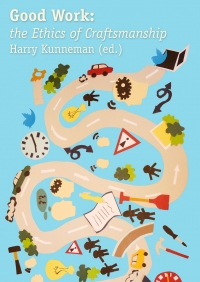Listening to children and parents
In December 2016 the book appeared based on the November 2014 International Conference in Leiden on the United Nations Convention of the Rights of the Child. See for the table of content of this impressive large scale project, http://www.brill.com/products/book/united-nations-convention-rights-child Based on a presentation at the conference I wrote chapter 42 on untangling high conflict divorce by listening to children and parents, the abstract is added here:
Divorce is a common and complex phenomenon with high social impact, especially when it involves pervasive conflict. This chapter discusses an analytic content-based framework for gaining an in-depth understanding of divorce. It considers seven interrelated dimensions: time, conflict, relationships, violence, systems, cooperation and communication. Each dimension can be further related to the exacerbating factors of addiction and psychiatric illness. This analytical method points the way to de-escalating domestic conflict and sometimes intimate violence after divorce by listening to and properly interpreting the voices of children and parents. Partner violence and controlling behaviour before, during and after divorce can arise from the struggle of one partner to attack and diminish the other, or by both partners contending for power as the family breaks up. The resulting conflict can disrupt the parental partnership in ways that traumatise them and interfere with their children’s right to grow up in safe surroundings, nurtured and guided by both parents. Social professionals who respond effectively are able to look beyond stereotypes to sense the unique and subtle patterns underlying the intense and persistent discord characteristic of high-conflict divorce. Only when the particular aspects of those patterns are understood and properly addressed can (co-) parenting be restored to assure the children of post-divorce safety.
A copy can be received on request.
Gendersensitivity in Domestic Violence Research
In 2016, the Dutch Ministry of Security and Justice Scientific Research and
Documentation Centre (WODC) will be repeating the prevalence study into
domestic violence, which was last conducted in 2010. The WODC is also
aiming to improve the study. Gender sensitivity is one of the points on which
improvement possibilities are being examined. Between end January and end
April 2016, Regioplan and Bureau Dijkstra, conducted research with the aim of
providing WODC with substantiated advice regarding this. This summary contains
the results of this study.
Complex divorce and disrupted family relationships
I wrote a blog on my visit and presentation at the European Network on Gender and Violence in June in Istanbul
See Sietske Dijkstra’s Dutch website for a complete list of her publications
A Multisciplinaire Centre for Child Abuse opened in the Netherlands in November 2015. Read here my blog about the opening and the afternoon symposium.
Recent:Post-divorce parenting and fatal violence. Separate worlds and tense relations
In Social Work now (March, 2015) Dijkstra & Verhoeven published their article on the Zeister case of the two brother Julian and Ruben who were killed by their fater. Their parents had been wapped up in a high conflict divorce. See the article at page 13-19 in social-work-now-mach-r2015
Reaching out for skilful performance in handling domestic violence
In this article I define good work as being the skilful performance shown by experienced
practitioners in their daily activities: good work which can to some extent be shown and learned, although it might not always have an extensive vocabulary.Doing and knowing are closely related and mutually reinforce the good work of these practitioners. As
Polanyi explains (1958), committed practitioners learn in an apprenticeship from
experienced colleagues and from clients and make sense of experience as a skilful act. The quality of the work in the handling of domestic violence is crucially important. Good work is essential because it can reduce risks, break destructive patterns of violence, create safety and even save lives. Failures and avoidance behaviour can prove costly for individuals
and society alike and discredit professional practice (Appraisal, March 2014, page 33).

H. Kunneman (ed.), 2012, availbale as E-book, including a chapter on the power and fragility of tacit knowing in handling domestic violence
Building on Richard Sennett’s recent work this books tries to clarify the ethical significance of craftsmanship. According to Sennett, ‘learning to work well’ is a deep source of personal meaning and of fruitful cooperation. Moreover provides the foundation of citizenship. Learning to master a craft is learning to be curious and patient, to focus on relationships and learn the skills of anticipation and revision, in a continual dialogue with material that resists ‘quick fixes’ and turns the craftsman ‘outward’. In the contemporary search for practically relevant perspectives that point beyond the moral poverty of a market driven society, ‘the ethics of craftsmanship’ thus offers an intriguing and fruitful perspective, worth of in depth exploration.
ABSTRACT Journal of Social Intervention, 2011
Battering as a consequence of power and powerlessness. Men learn to talk about domestic violence and their relationships with women and children through group work
This article reports on a working visit of a week (in September 2010), to three domestic abuse
programs aimed at male perpetrators of abuse, in Minnesota in the USA. So far, an effective domestic violence intervention, or a model or treatment which is superior, is lacking (Babcock, Green & Robbie, 2004). An important goal of the visit was to gain more insight into the ways American colleagues, in research and practice, deal with male perpetrators of abuse; how they perform risk analyses; how they provide help, support and safety. Also, the author wanted to know how they deal with the fact that these men often are fathers. The working visit provided valuable inside information. The author spoke with experts and practitioners, observed group work and, in doing so, gained insight into the power and powerlessness of male perpetrators of abuse and their roles as partners and fathers. Combining insights from these conversations and observations and existing theory, this article gives a practice based view on how American colleagues deal with these men.
Keywords: Domestic violence, partner abuse, partnership, parenting, fatherhood



